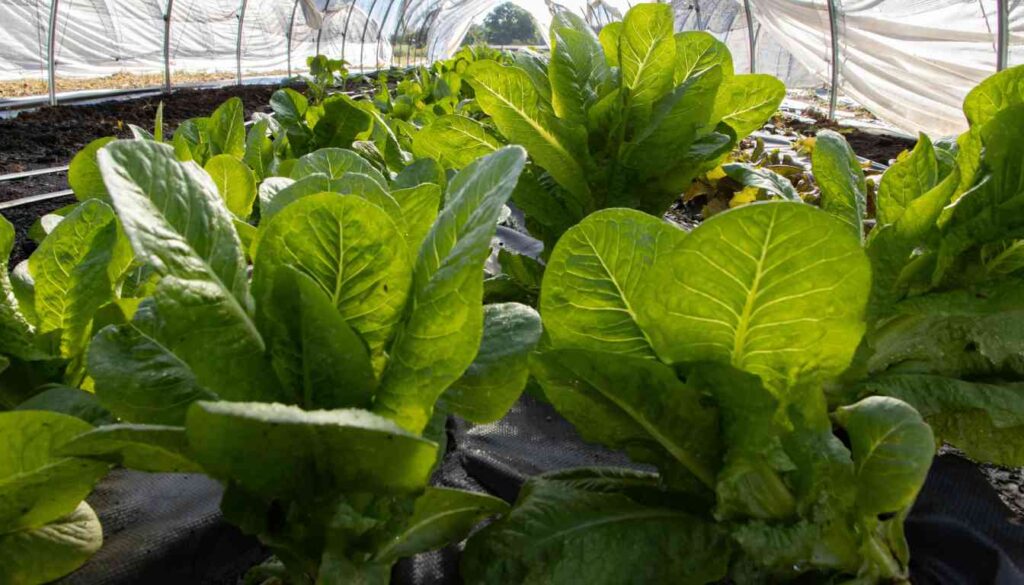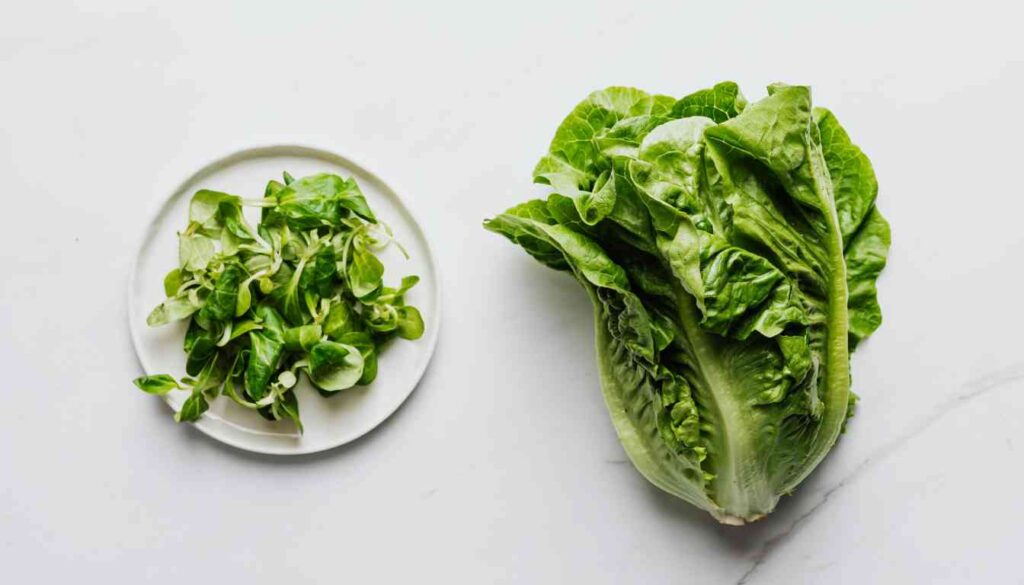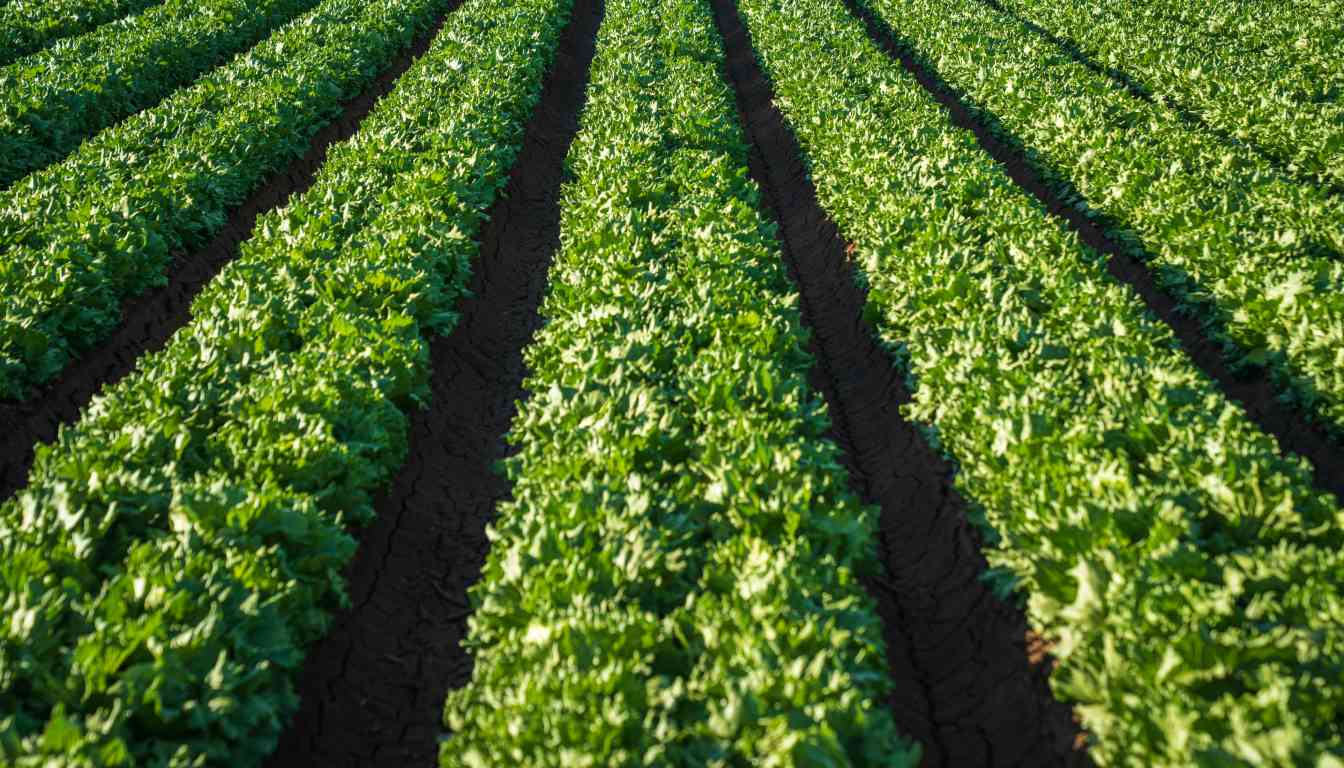Paul Johnston is the founder and master herbalist of The Herb Prof, with decades of clinical experience in naturopathic medicine, herbal remedies, detoxification and holistic wellness. After overcoming his own serious health challenges, he now dedicates himself to helping others reclaim their health naturally.
Growing lettuce can sometimes be frustrating, especially when romaine starts stretching upward instead of producing full, crisp leaves. As an experienced gardener, I have dealt with tall, leggy romaine many times and understand how discouraging it can feel when your efforts don’t turn out as expected. The good news is that there are clear reasons this happens and practical ways to prevent it. One of the most common causes of tall romaine lettuce is bolting.
Bolting is a natural process in which the plant produces a flower stalk to set seeds. This usually happens when the temperature rises, and the plant receives excess sunlight. When romaine lettuce bolts, the leaves tend to taste bitter, and the plant becomes less productive. However, there are several ways to prevent bolting, such as providing shade, watering the plant regularly, and harvesting the lettuce before it reaches maturity.
Another reason why romaine lettuce grows tall is due to genetics. Some lettuce varieties, such as mini romaine lettuce, are naturally tall and thin. However, if you’re growing romaine lettuce and notice that it’s growing taller than usual, it may be due to poor growing conditions or lack of nutrients. By providing your romaine lettuce with the right growing conditions, such as well-draining soil and sufficient sunlight, you can prevent it from growing tall and ensure that it produces plump and juicy leaves.
Understanding Bolting in Lettuce – Romaine Lettuce Growing Tall
Definition of Bolting
As a gardener, it is essential to understand what bolting is and how it affects your lettuce plants. Bolting is a natural process in which lettuce plants produce a flowering stalk, also known as a flower stalk, to prepare for reproduction. This process occurs when the plant has reached maturity, and its energy is directed towards reproduction rather than producing leaves. Bolting lettuce can happen to any lettuce variety, including romaine lettuce, and is a common occurrence during the growing season.
Causes of Bolting – Romaine Lettuce Growing Tall
Bolting in lettuce is triggered by certain environmental factors such as temperature, sunlight, and water. High temperatures, especially during the summer season, can cause lettuce plants to bolt. When the temperature rises, the lettuce plant perceives it as a signal to reproduce, leading to the production of a flowering stalk. Full sun exposure can also cause lettuce plants to bolt, so it is advisable to grow them in partial shade during the hot weather.
Water and soil nutrients can also affect bolting in lettuce. The plant requires a consistent supply of water to prevent stress, which can trigger bolting. Inadequate water supply can cause the plant to focus on reproduction rather than producing leaves. Soil nutrients such as nitrogen, potassium, and phosphorus are also essential for healthy lettuce growth. A lack of these nutrients can cause stress, leading to bolting.
Understanding bolting in lettuce is crucial for any gardener. Factors such as temperature, sunlight, water, and soil nutrients can affect bolting in lettuce plants. By providing the right growing conditions, you can prevent bolting and ensure healthy lettuce growth.
Effects of Bolting in Lettuce – Romaine Lettuce Growing Tall
When lettuce bolts, it produces a flower stalk which takes energy away from the foliage. This can harm the flavor and quality of the leaves. Here are some of the effects of bolting in lettuce:
Bitter Taste – Romaine Lettuce Growing Tall
One of the most noticeable effects of bolting in lettuce is a bitter taste. This is because the plant is diverting energy from the leaves to the flower stalk, causing the leaves to become bitter and tough. This can make the lettuce less enjoyable to eat and reduce its quality.
Reduced Leaf Quality
Bolting can also lead to reduced leaf quality in lettuce. The leaves may become thinner and less succulent, with less vibrant color. The dark green leaves that are characteristic of lettuce may fade and become less attractive. This can make the lettuce less appealing to consumers and reduce its market value.
To prevent bolting, it is important to plant lettuce at the right time and in the right conditions. Lettuce is a cool-season crop and prefers temperatures between 60-65°F. Providing adequate moisture and shading the plants during hot weather can also help prevent bolting. By taking these steps, you can help ensure that your lettuce stays fresh, flavorful, and of high quality.
Managing Bolting in Lettuce – Romaine Lettuce Growing Tall

As a gardener, I know that bolting in lettuce can be a frustrating problem. Bolting occurs when the lettuce plant begins to grow tall and produce a flower stalk, signalling the end of its leafy growth. In this section, I will provide some tips on how to manage bolting in lettuce.
Preventive Measures
Prevention is always the best approach when it comes to bolting in lettuce. Here are some preventive measures that can be taken to avoid bolting:
- Cooler Weather: Lettuce is a cool-weather crop, which means it grows best in cooler temperatures. If you live in a warm climate, try to plant your lettuce as early as possible and harvest it before the weather gets too hot.
- Heat-Tolerant Varieties: Some lettuce varieties are more heat-tolerant and slow to bolt than others. Parris Island is a popular heat-tolerant romaine lettuce that is ideal for spring crops.
- Proper Spacing: Make sure to plant your lettuce seedlings or seeds at the proper spacing to ensure good air circulation. Crowded plants can lead to disease and bolting.
- Mulch and Compost: Adding a layer of mulch or compost to the soil can help regulate soil moisture and temperature, which can prevent bolting.
How to Delay Bolting – Romaine Lettuce Growing Tall
If your lettuce has already started to bolt, there are a few things you can do to delay the process and extend your harvest:
- Row Covers: Covering your lettuce with row covers can help regulate temperature and prevent bolting.
- Well-Draining Soil: Make sure your lettuce is planted in well-draining soil to prevent stress on the plant, which can cause bolting.
- Harvesting: Harvest your lettuce as soon as it is ready to prevent it from going to seed. This will also encourage the plant to produce more leaves and delay the bolting process.
- Continuous Supply: To ensure a continuous supply of lettuce, plant new seeds every few weeks. This will ensure that you always have fresh lettuce to harvest.
Managing bolting in lettuce requires a combination of preventive measures and quick action once the plant starts to bolt. By following these tips, home gardeners can enjoy a continuous supply of fresh lettuce throughout the growing season.
Before You Go – Romaine Lettuce Growing Tall
Growing Romaine lettuce can be a rewarding experience, but it requires careful attention and management. Bolting is a common issue that can cause Romaine lettuce to grow tall and develop a central stalk, which can lead to bitter-tasting leaves. To prevent bolting, it is important to plant Romaine lettuce during the right growing season and provide adequate water, sunlight, and nutrients.
When growing Romaine lettuce, it is important to start with fresh, crispy seeds or seedlings. Seed trays should be kept moist to ensure strong root growth and prevent leggy seedlings. Mature lettuce can also become leggy, which can be problematic.
Romaine lettuce is a great source of antioxidants, folate, calcium, vitamin C, and vitamin K. It is a versatile ingredient that can be used in a variety of dishes, including Caesar salad. However, pests like aphids and slugs can damage lettuce leaves, so it is important to monitor for signs of infestation and take appropriate action.
In addition to Romaine lettuce, other varieties like Little Gem and Cilantro can also be grown successfully. These varieties offer different flavors and trace minerals that can enhance the nutritional value of your garden. Overall, with proper management and attention, growing Romaine lettuce can be a fun and rewarding experience.
Lettuce Love: Romaine Lettuce Growing Tall and TheHerbProf

Hey, herb enthusiasts! Let’s delve into the world of Romaine Lettuce Growing Tall and explore how it connects to our herbal home, theherbprof.com.
First off, Romaine Lettuce growing tall is a marvel! It’s a testament to the power of nature, offering a unique gardening experience. Now, isn’t that something we all love at theherbprof.com?
But wait, there’s more! By sharing information about Romaine Lettuce growing tall, we’re showing our commitment to exploring and promoting herbal wisdom. It’s like saying, “Hey, want to learn more about herbs? Come join us at theherbprof.com!”
So, in a nutshell, Romaine Lettuce growing tall and theherbprof.com are like two peas in a pod. They both celebrate the magic of herbs and together, they can help us lead healthier, happier lives.
References – Romaine Lettuce Growing Tall
Little Herb Encyclopedia, by Jack Ritchason; N.D., Woodland Publishing Incorporated, 1995
The Ultimate Healing System, Course Manual, Copyright 1985, Don Lepore
Planetary Herbology, Michael Tierra, C.A., N.D., Lotus Press, 1988
Handbook of Medicinal Herbs, by James A. Duke, Pub. CRP Second Edition 2007
The Complete Medicinal Herbal, by Penelope Ody, Published by Dorling Kindersley
Check the Following Articles!
How to Use Leca for Cuttings Successfully?
Over Wintering Tomato Plants: Keep It Alive During Winter
Frequently Asked Questions – Romaine Lettuce Growing Tall
1. How can you prevent romaine lettuce from bolting?
To prevent romaine lettuce from bolting, it is important to plant it in the right conditions. Romaine lettuce prefers cooler temperatures and needs to be watered regularly. Avoid planting it in hot weather and make sure it has enough space to grow. Additionally, you can try planting bolt-resistant varieties of romaine lettuce.
2. What causes lettuce to develop a long stalk?
Lettuce develops a long stalk when it begins to bolt. Bolting is a natural process that occurs when the plant senses that it is reaching the end of its life cycle. This process is triggered by changes in temperature, light, and other environmental factors.
3. Can bolted romaine lettuce still be consumed?
Bolted romaine lettuce is still safe to eat, but it may not taste as good as lettuce that has not bolted. The leaves may be tougher and more bitter, and the stalk may be woody. However, you can still use bolted lettuce in salads, sandwiches, and other dishes.
4. What are the best practices for trimming bolted lettuce?
When trimming bolted lettuce, it is important to remove the entire stalk, as well as any leaves that are yellow or brown. You can then use the remaining leaves in salads or other dishes. It is best to trim bolted lettuce as soon as possible to prevent the plant from producing seeds.
5. Why does lettuce sometimes grow tall and thin?
Lettuce may grow tall and thin if it is not receiving enough light or if it is overcrowded. To prevent this, make sure that your lettuce plants are spaced out properly and that they are receiving enough sunlight.
6. What should be done with romaine lettuce after it has bolted?
After romaine lettuce has bolted, it is best to harvest it as soon as possible. You can then use the leaves in salads or other dishes, or you can compost them. If you want to save the seeds for planting, you can allow the plant to continue growing until it produces seeds.

